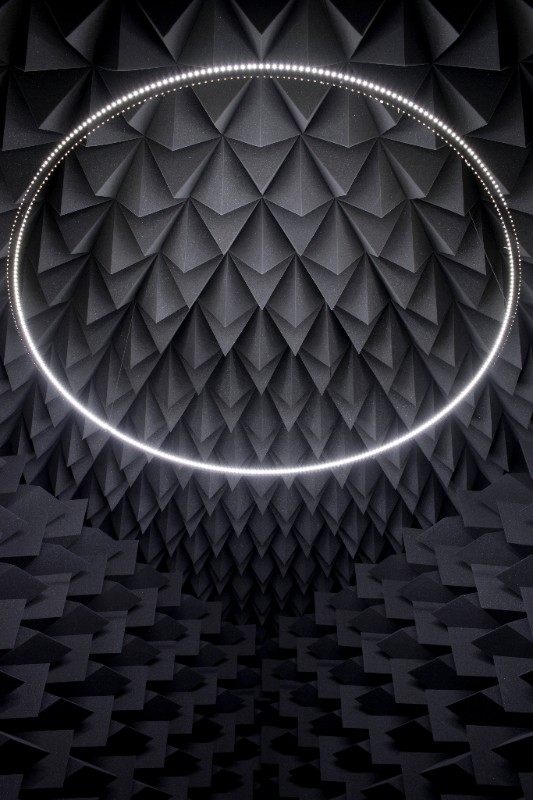Arts at CERN is delighted to announce the winners of the four artist residency awards for 2017: the studio hrm199 led by artist Haroon Mirza, Laura Couto Rosado, Cheolwon Chang and Tomo Savić-Gecan.
Arts at CERN is CERN’s arts and science programme, fostering dialogue between prominent scientists and visionary artists at the world’s leading centre for particle physics.
“Since 2011, Arts at CERN has developed a wide network of partnerships with eminent cultural institutions around the globe. The programme’s success now means four artistic residencies can take place every year here at CERN, bringing together the worlds of science and art to inspire each other in new creative expressions,” says Charlotte Warakaulle, Director for International Relations at CERN.
“I am thrilled to invite studio hrm199, Laura Couto, Cheolwon Chang and Tomo Savić-Gecan to this unusual and highly scientific environment, where I am certain the artists’ research and ideas will be expanded with many different cultural and creative angles, thanks to the interactions with CERN scientists,” affirms Mónica Bello, head of Arts at CERN.
The winner of “Collide Pro Helvetia”, in partnership with the Swiss Arts Council, Pro Helvetia, is the artist and designer Laura Couto. She will spend three months at CERN exploring design principles inspired by fundamental particles and the way these are described by physicists.
“Collide is a unique opportunity for a creator to confront his ideas to the actual practices and knowledge of renowned scientists. It is a life-and-career-changing experience. We are pleased to offer this chance to Laura Couto Rosado, who unanimously convinced the jury with her work at the crossroads between physics, interaction design and poetry” says Michel Vust, Project Leader Pro Helvetia.
As part of the ongoing collaboration with FACT - Foundation for Art and Creative Technology in Liverpool - in “Collide International”, the artists Haroon Mirza and Jack Jelfs, forming studio hrm199, will reside at CERN for two months, where they will work in close collaboration with a research scientist. Afterwards, the artists will spend one month at the Liverpool institution to later engage in production. The jury chose the studio platform hrm199 for its ability to consistently extend the ambitious standards of creativity and to build on an ongoing fascination with media, time and transmission.
FACT's Director Prof. Mike Stubbs says: "The jury is very excited for the applicants for this second year of FACT and Arts at CERN's COLLIDE International Residency Award. In our first year, we have hosted Yunchul Kim and have, together with our partners LJMU, Liverpool University and Liverpool City Council, been stunned by the magic of his initial research. We were also very impressed by artists Julieta Aranda and James Bridle, who were runners up for the award in 2016. FACT intends Kim's new work and the work of Haroon (winner of 2017's award) to be displayed as part of a very exciting new exhibition in 2018."
Moreover, the two country-specific awards named “Accelerate” have been presented to South Korean and Croatian artists. Seoul-based artist Cheolwon Chang plans to investigate the geometric properties of nature and how mathematics influences further understanding of our universe. His award has been made possible thanks to collaboration between CERN and ARKO, the Korean Arts Council, and he plans to pursue his research in connection with particle physics.
The Croatian artist Tomo Savić-Gecan will come to CERN for one month thanks to CERN’s partnership with the Ministry of Culture of Croatia and Kontjener Bureau of Contemporary Art Praxis in Zagreb. He will gather inspiration through dialogue with theoretical and experimental physicists to develop a specific project for CERN, understanding the implications of time-space research.

